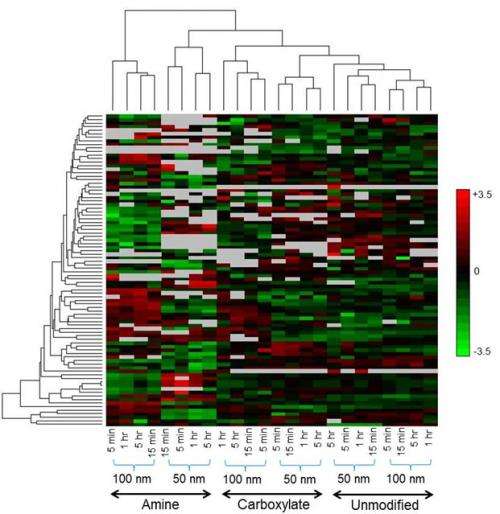Nanoparticle proteomics: Characterizing protein-nanoparticle interactions in biofluids

New insights about how the human body interacts with nanoparticles at the protein level were published by an EMSL user team in the December 2011 issue 23 of Proteomics.
The team, from Pacific Northwest National Laboratory, devised an elegant and novel method to characterize blood plasma proteins that attach to the surface of nanoparticles and generated the largest set of protein-nanoparticle data to date.
For their study, the researchers used nanoparticles that emulate selected characteristics of environmental particles, such as those found in diesel exhaust or urban environments, and can enter the lungs and cause asthma, emphysema, and cancer. They incubated the nanoparticles with human blood plasma, allowing plasma proteins to adsorb to their surface, and then digested the proteins while they were still attached to the nanoparticles. These digested proteins were identified and quantified using EMSL’s LTQ Orbitrap mass spectrometers and LC-MS based proteomics.
Remarkably, the team identified 88 nanoparticle-adsorbed plasma proteins in different conditions. Their data showed that the proteins coated the nanoparticles in fewer than five minutes, suggesting the protein-nanoparticle interaction is immediate.
Furthermore, different nanoparticle sizes and surface chemistries resulted in different adsorbed protein profiles, indicating that different kinds of nanoparticles may have different accumulation, fate, and health effects. Such analyses pave the way for better predictive models about nanoparticle-protein interactions and can influence decisions about nanoparticle use and human health and safety.
More information: Zhang H, et al. 2011. “Quantitative proteomics analysis of adsorbed plasma proteins classifies nanoparticles with different surface properties and size.” Proteomics 11(23): 4569-4577.
Provided by Environmental Molecular Sciences Laboratory
















